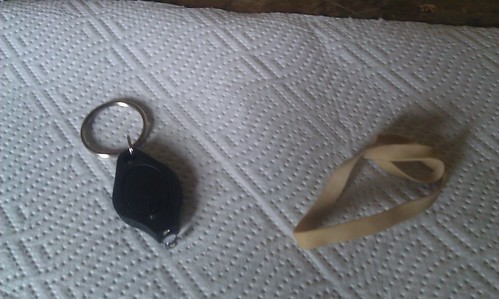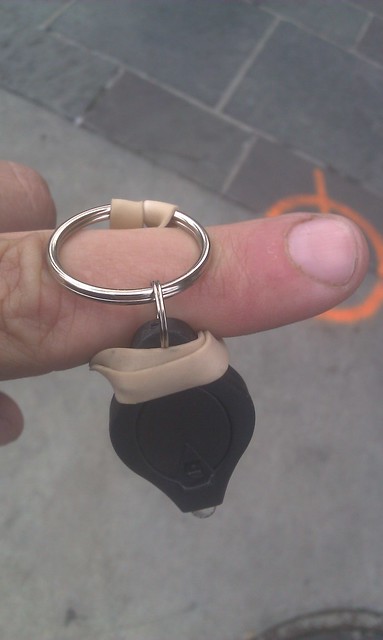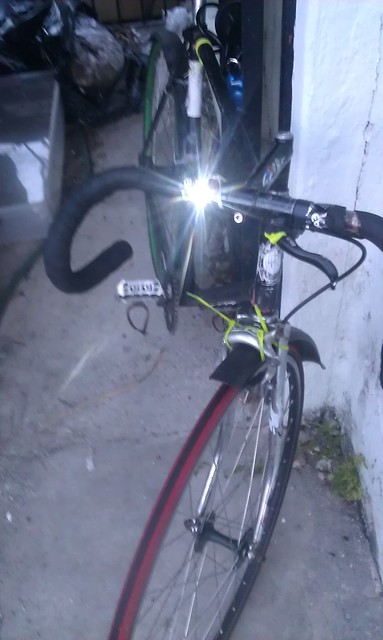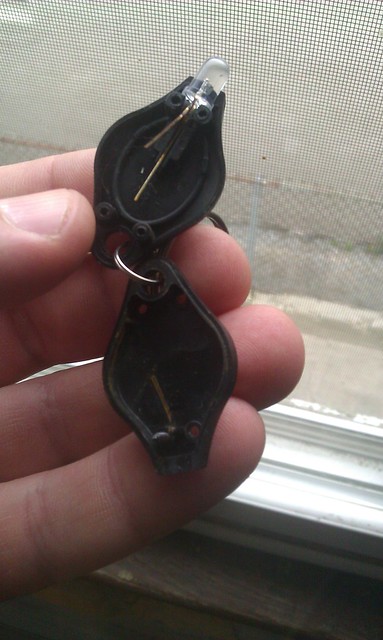Many people ride in new orleans without bike lights. This is foolish, honestly. As much as i love riding in the darkened streets under the moonlight, it's a good way for cars to hit you.
So i've been thinking about a way to achieve a decent LED bike light that lasts months for very little money, one i could distribute to people you see riding dark.
This is especially nice if you are a parade or ride organizer, and want to distribute lights among your riders / paraders--since the lights are not the kind that last an extremely long time.
The lights.
For some reason, you can buy 10 LED lights from a
bargain hong kong distributor for about $16. This is less than the cost of two 2016 batteries that you get in each light. If you wanted to run a cheap battery scam...
cheap bike light with rubber band
a bag of lights, and the finished device on my finger
The rubber band holds the light tight against the frame (or a finger). These particular lights come with a key ring, which makes the task of wrapping the light around the frame easier. but, you could also thread a rubber band through the hole in the light itself.
the mount, here demonstrated on my finger
finished!
the light activates with a button or a switch. the switch is what you want to use, naturally.
Re-using?
Here's the internals of the light, showing the 4 screws, and not showing the the 2x2106 button batteries. if you want to re-use the LED, i'm thinking the batteries can be replaced. of course, it's cheaper to buy new, and the most toxic / ecologically costly component of this setup is the batteries.













